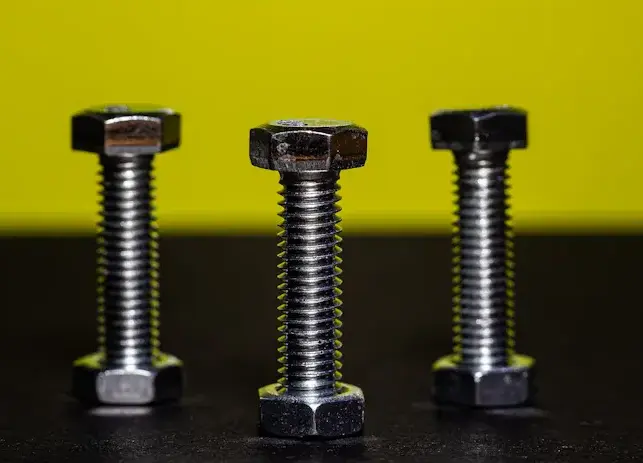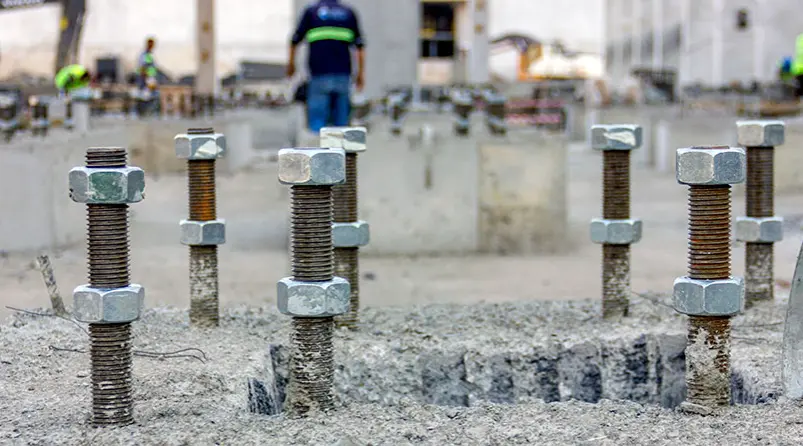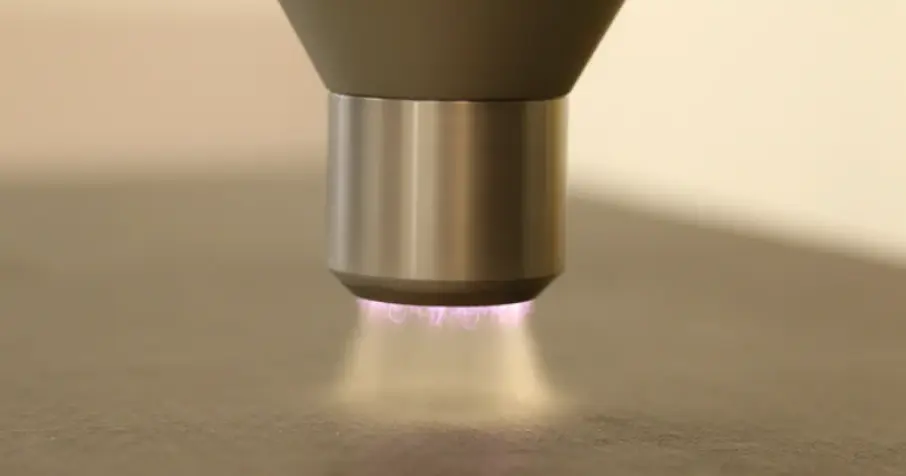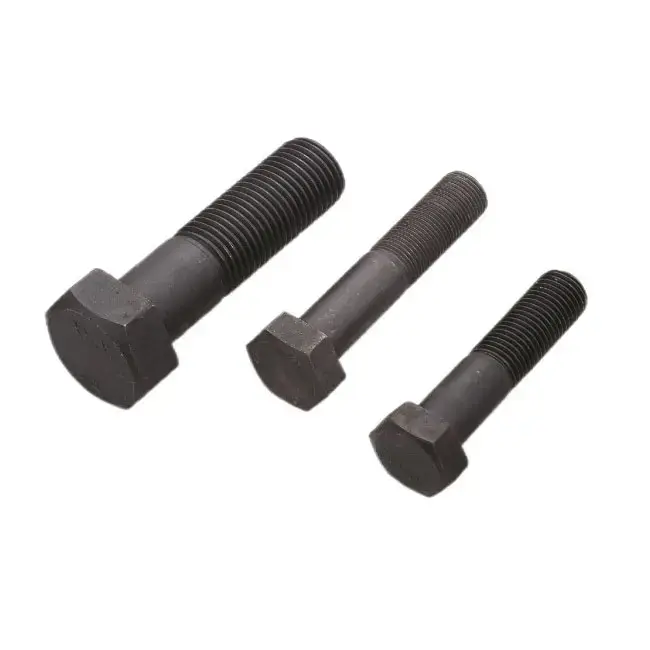Lock Nuts Explained How They Prevent Loosening Under Vibration
A lock nut is a specialized fastener designed to maintain secure connections in high-vibration environments. Its unique design prevents loosening by either increasing friction or creating a mechanical interlock. For example, the Crushlock Permanent Nut demonstrates exceptional performance, holding up to 525% more torque than a standard nut in certain tests. This reliability makes it indispensable in critical applications where standard nuts fail under stress.
Key Takeaways
· Lock Nuts areimportant tools that stop loosening in vibrating areas. They help keep things safe and working well in key uses.
· There are different lock nuts like nylon insert and all-metal ones. Each type has special features for certain needs, making them work better.
· Using the right tightening methods and materials is key. This helps lock nuts last longer and work best in many situations.
What Are Lock Nuts and How Do They Work?
Definition and Purpose of Lock Nuts
A lock nut is a specialized fastener designed to prevent loosening under conditions of vibration, torque, or dynamic loads. Unlike standard nuts, it incorporates unique features that enhance its ability to maintain a secure connection. These nuts are widely used in industries such as automotive, aerospace, and heavy machinery, where reliability and safety are critical. Their primary purpose is to ensure that bolted joints remain intact, even in high-stress environments.
Key Features That Differentiate Lock Nuts from Standard Nuts
Lock nuts stand out due to their innovative designs and materials. Many types, such as nylon insert lock nuts, use a deformable nylon ring to create friction against the bolt threads. Others, like all-Metal Lock Nuts, rely on mechanical deformation to achieve a secure fit. The table below highlights some key features and applications of different lock nut series:
| Lock Nut Series | Key Features | Applications |
| KM & HM Series | Reliable fastening solutions, withstands heavy loads and vibrations | Fastening bearings in industrial machinery |
| KMFE Series | Integral locking screws for secure attachment | Critical machinery, ensures stability under dynamic loads |
| HMV E Series | Hydraulic pressure for secure fastening, quick connection coupling | Simplifies installation/removal in industrial applications |
| KM & HM T Series | High-quality steel, prevents misalignment | Automotive and industrial machinery applications |
| KM(K) Series | Secure fastening, maintains alignment and stability | Rotating equipment applications |
These features make lock nuts indispensable in applications where standard nuts may fail.
Overview of How Lock Nuts Resist Loosening
Lock nuts resist loosening through friction-based and mechanical Locking Mechanisms.Self-locking nuts, for instance, utilize frictional forces to maintain bolt tension. Nylon insert lock nuts deform elastically, creating a locking force that prevents movement. Studies show that self-locking nuts can reduce bolt loosening by over 50%, making them highly effective in high-vibration environments. Additionally, lock nuts often exhibit superior corrosion resistance, as demonstrated by the lower corrosion rate of white zinc-plated nylon lock nuts compared to traditional lock nuts.
By combining advanced materials and engineering, lock nuts provide a reliable solution for maintaining secure connections in demanding conditions.
Types of Lock Nuts and Their Mechanisms
Lock nuts come in various designs, each tailored to specific applications and performance requirements. Below is an overview of the most common types and their unique mechanisms.
Nylon Insert Lock Nuts
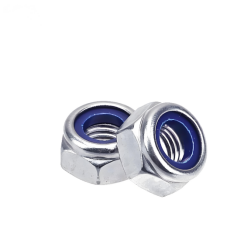
Nylon insert lock nuts feature a nylon ring that deforms when tightened onto a bolt. This deformation creates friction, preventing the nut from loosening under vibration. These nuts are ideal for applications where temperatures do not exceed 250°F, as the nylon can degrade under high heat. However, their effectiveness diminishes after repeated use due to wear on the nylon insert. Vibration tests, such as those adhering to US NAS 3350 standards, confirm their reliability in dynamic environments.
Metal Lock Nuts (e.g., All-Metal Lock Nuts)
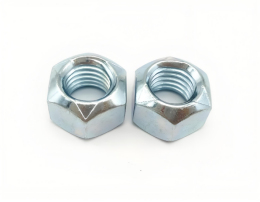
Metal lock nuts rely on mechanical deformation to resist loosening. These nuts are made entirely of metal, making them suitable for high-temperature applications where nylon inserts would fail. Their robust design ensures durability and consistent performance in demanding conditions.
Bearing Lock Nuts
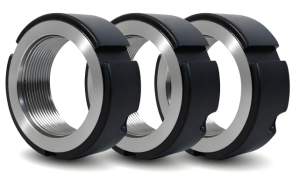
Bearing lock nuts secure bearings onto shafts, preventing loosening caused by vibration. They often require a positive locking action and are used with bearing lock washers for enhanced security. These nuts are essential in industrial machinery, where maintaining alignment and stability is critical.
Prevailing Torque Lock Nuts
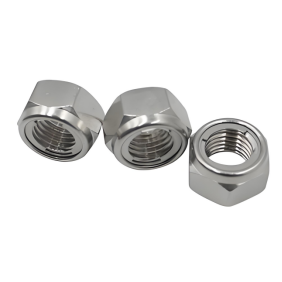
Prevailing torque lock nuts maintain a constant resistance to loosening by creating friction between the nut and bolt threads. This friction is achieved through design features such as deformed threads or inserts. These nuts are highly effective in high-vibration environments, ensuring long-term reliability.
Serrated Flange Lock Nuts
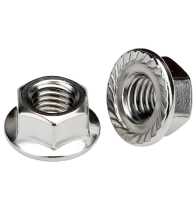
Serrated flange lock nuts feature a serrated surface on the flange, which increases friction against the mating surface. This design enhances resistance to loosening under vibration. Specialized types, such as hex flange serrated nuts, provide additional security in applications with fluctuating loads. Their two-way locking mechanisms ensure stability regardless of the load direction, making them a preferred choice in high-vibration settings.
How Lock Nuts Prevent Loosening Under Vibration
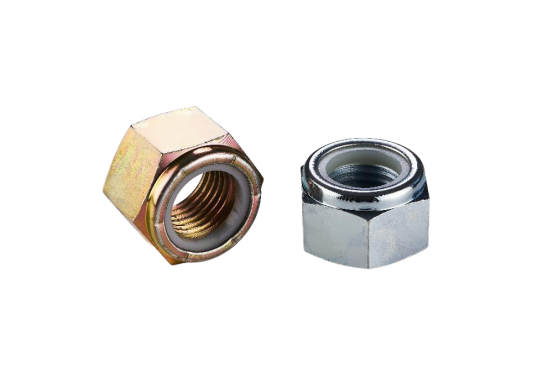
Friction-Based Mechanisms
Friction-based mechanisms play a critical role in preventing loosening under vibration. These mechanisms rely on increased friction between the nut and bolt threads to maintain a secure connection. For instance, nylon insert lock nuts use a deformable nylon ring to create resistance against rotational forces. This resistance ensures that the nut remains in place even when subjected to dynamic loads.
Quantitative studies highlight the effectiveness of friction-based designs. Jack bolt nuts, for example, demonstrated an 8.5% improvement in primary locking compared to heavy hex nuts. Tests conducted on a Junker type test machine further confirmed their superior resistance to loosening under dynamic conditions. These results underscore the reliability of friction-based lock nuts in maintaining preload and resisting displacement during vibration.
Mechanical Locking Mechanisms
Mechanical locking mechanisms provide an alternative approach to securing fasteners. These mechanisms often involve physical deformation or interlocking features that prevent movement. All-metal lock nuts, for example, deform slightly to grip the bolt threads, creating a mechanical barrier against loosening.
In demanding environments, such as aerospace applications, mechanical locking mechanisms have proven their reliability. A specific threadlocker used in the industry met stringent specifications, resulting in zero incidents of fastener loosening over a 36-month period. However, challenges can arise in extreme conditions. In one copper mining operation, conventional mechanical locking devices failed, leading to frequent shutdowns. This highlights the importance of selecting the right lock nut for the application.
Advantages of Lock Nuts in High-Vibration Environments
Lock nuts offer significant advantages in environments with consistent high vibration. Their ability to resist loosening ensures the safety and reliability of critical systems. Industries such as construction, power generation, and transportation rely heavily on these fasteners for secure clamping.
The global lock nut market continues to grow due to increasing demand for reliable fastening solutions. Performance characteristics, such as vibration resistance and enhanced clamping force, make lock nuts indispensable in high-stress applications. The table below summarizes key aspects of their performance:
| Aspect | Detail |
| Market Growth | The global lock nut market is experiencing robust growth. |
| Key Industries | Construction, power generation, and transportation sectors. |
| Performance Characteristics | Lock nuts provide crucial vibration resistance and secure clamping. |
| Demand Drivers | Increased demand due to reliance on reliable fastening solutions. |
Lock nuts not only enhance operational efficiency but also reduce maintenance costs by minimizing the risk of fastener failure.
Practical Tips for Using Lock Nuts
How to Properly Tighten a Lock Nut
Proper tightening ensures the effectiveness and longevity of lock nuts in various applications. Following a step-by-step approach minimizes the risk of thread damage and ensures secure fastening:
1. Tighten the inner nut to 37 ft-lb while spinning the hub to ensure proper seating.
2. Back off the inner nut without disturbing the hub's position.
3. Retighten the inner nut to 7 ft-lb to achieve the correct preload.
4. Place the tab washer on the stub axle to prepare for the outer nut.
5. Tighten the outer nut to 37 ft-lb for final assembly.
6. Bend the tab washer to lock both nuts securely in place.
Using a calibrated torque wrench during this process ensures accurate torque application, preventing uneven clamping forces. Regular inspection of the threads and components further enhances reliability.
Reusability: Can Lock Nuts Be Used More Than Once?
The reusability of lock nuts depends on their type and material. Nylon insert lock nuts, for instance, lose their effectiveness after repeated use due to wear on the nylon ring. Testing has shown that the prevailing torque of nylon inserts decreases significantly after multiple installations. In contrast, all-metal lock nuts can often be reused, provided they remain undamaged and meet torque specifications.
Experts recommend inspecting lock nuts for wear or deformation before reuse. If the locking mechanism shows signs of degradation, replacing the nut ensures continued performance and safety.
Material Considerations: Choosing the Right Lock Nut for Your Application
Selecting the appropriate lock nut material is critical for ensuring performance under specific conditions. Nylon inserts must meet prevailing torque requirements and withstand operational temperatures. For high-strength applications, testing and characterization of the nylon material ensure reliability.
All-metal lock nuts, made from materials like stainless steel or alloy steel, offer superior durability in high-temperature environments. When choosing a lock nut, consider factors such as load requirements, environmental conditions, and compatibility with the bolt material. Proper material selection enhances the nut's resistance to loosening and extends its service life.
Lock nuts play a vital role in maintaining secure connections in high-vibration environments. Each type offers unique features tailored to specific applications, ensuring reliability and safety. Proper tightening techniques and material selection maximize their effectiveness. Selecting the right lock nut enhances system durability and performance, making it an indispensable component in critical projects.
FAQ
What is the difference between nylon insert lock nuts and all-metal lock nuts?
Nylon insert lock nuts use a deformable nylon ring for friction. All-metal lock nuts rely on mechanical deformation, making them suitable for high-temperature applications.
Can lock nuts be reused after removal?
Some lock nuts, like all-metal types, can be reused if undamaged. Nylon insert lock nuts lose effectiveness after repeated use due to wear on the nylon ring.
Are lock nuts suitable for extreme vibration environments?
Yes, lock nuts resist loosening under vibration. Types like serrated flange lock nuts and prevailing torque lock nuts excel in high-vibration applications, ensuring secure connections.


